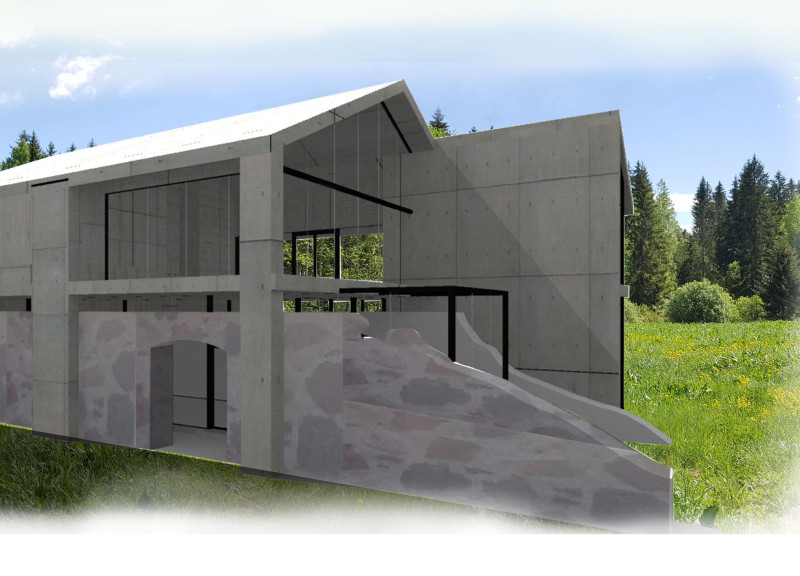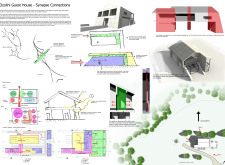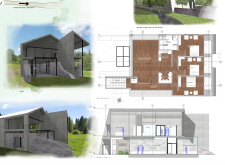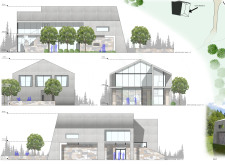5 key facts about this project
The Ozolini Guest House is located in the scenic Riga Region and presents a design that aligns with its natural surroundings. The concept revolves around "Synapse Connections," which takes inspiration from how neurons interact biologically. The building serves as a retreat that connects with the existing stone barn, showcasing modern design while honoring historical elements.
Conceptual Framework
The design introduces a 'Synaptic Gap' between the new structure and the stone barn. This gap allows for an appreciation of both buildings without physical contact. It creates a space where the new design can communicate with the historical context. Visitors can explore freely, moving between indoor areas and the natural landscape outside.
Materiality and Structure
Glass facades play a central role in the design, contributing to an overall feeling of lightness. These facades are made possible by embedding aluminum frames into the walls and slabs. This approach allows the glass surfaces to dominate, creating a continuous connection to the outside world. The materials used not only enhance visual appeal but also support durability, ensuring that the new construction works with the existing barn.
Climate Responsiveness
The design considers climate carefully. Roof extensions provide shade from direct sunlight in the summer, helping to keep the interior comfortable. During winter, sunlight is allowed to enter and warm the spaces inside. The stone barn also helps manage light, filtering harsh rays and creating a gentle, welcoming atmosphere throughout the year.
Aesthetic Detail
The building is supported by four vertical elements that give the impression of floating above the stone barn. This detail adds to the overall feeling of lightness. It highlights the harmony between the two structures. Each design choice reflects a careful focus on both form and function, reinforcing the connection between the guest house and its historical context. The result is a thoughtful blend of modernity and tradition.






















































